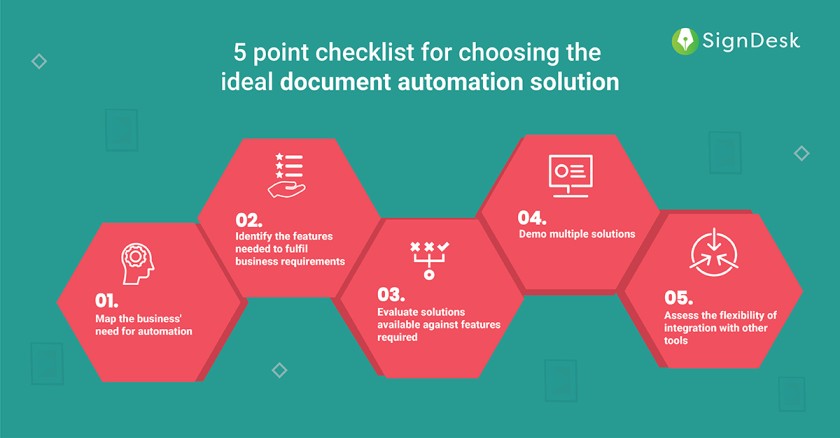What not to do while implementing a document automation solution

The days of storing and managing paperwork are long gone. Managing documents on automated workflows is swift, cost-effective, and provides a competitive advantage to businesses. By deploying a suitable document automation solution, businesses can access and streamline their data more accurately and comprehensively. This improves the business’ overall productivity and performance, significantly.
Once businesses decide to upgrade their document workflow by using an automated solution, the next step involves choosing the right solution for their organization. To enable businesses to make the right call on choosing the best document automation solution, here are a few red flags to be mindful of.
Things to avoid while choosing a document automation solution

#1.Choosing a solution without mapping organisational automation needs
It’s alluring to choose cutting-edge technology with a lot of features. However, businesses lose out on their vital time, resources, and productivity by being unsure of how well a document automation solution can solve their core requirements. Organisations must identify solutions that have the potential of fulfilling the company’s needs before onboarding a document automation solution. This can be done by charting out the business areas that can be streamlined using automated document workflows. This should serve as a framework for selecting the appropriate solution.
#2.Choosing a solution without doing a comparative analysis
It happens so very often that organisations evaluate and choose the least priced document automation solution to save on cost and resources. This, however, ends up costing the business a lot more in the long run. Businesses may eventually wind up with sub-optimal document workflow which isn’t the best fit for their company’s environment. When it comes to adopting a document automation solution, it’s safer and smarter not to be tempted by the first tool. Before a company decides to use a document automation solution, it is important to do ample research on various solutions and how well it fits in the company’s ecosystem. That is why, before making a final decision, it is highly recommended for businesses to explore, test and try at least two or more document automation solutions.
#3.Under evaluating the full scope of a document automation solution
As a company grows, so will the complexities of managing its document workflow. Therefore, companies should be able to fully utilise the power and flexibility of their document automation solution to produce greater results. Businesses must examine the end-to-end benefits, use cases, and functionalities of any document automation solution. It’s essential to find a solution that is industry-friendly, addresses unique challenges, and adapts to the business’ growing objectives.
#4.Choosing solely based on a demo
Document automation solutions help businesses streamline their document workflow. Choosing a document automation solution based on enticing advertisement pop-ups or a glamorous demo presentation may lead to errors and undesired results. If a wrong choice of software or tool is made, there is room for disappointment because of its unpleasant user interface and proclivity for malfunctions. In any event, it is essential to take the time to select a solution that matches an organisation’s workflow and requirements.
#5. Prioritising data security over flexibility
Document automation solutions are designed to make a company’s document workflow easier, smoother and faster. Choosing software with a high level of security that restricts access and collaboration can hamper the company’s overall performance and progress. To store confidential data and information, document automation workflows offer a high level of protection and constraints. Some software, however, may encrypt documents, making it harder to source and extract data. This could stifle the company’s growth. Companies must therefore adopt document automation solutions that are adaptable to changing regulatory and technology trends along with the company’s growing requirements.
The easiest method to deal with these problems is to make a plan. Planning should include ensuring that a company understands which document automation solution is suitable for its ecosystem and how well the new software will integrate with its existing workflow and employees. Right from charting out the business requirements to identifying the product specifications and flexibility required, it’s imperative to do a thorough research and evaluation before onboarding any solution. A proper tool selection framework will enable businesses to onboard solutions that suit their needs and boost productivity.
Stay ahead of the curve with SignDesk’s document automation solution that can be integrated seamlessly into any organisation’s ecosystem.